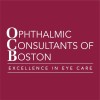
A Study to Evaluate the Neovista Ophthalmic System for the Treatment of Subfoveal CNV in Patients...
Wet Age-related Macular DegenerationThe objective of this clinical study is to evaluate the safety and feasibility of focal delivery of radiation for the treatment of subfoveal choroidal neovascularization (CNV) in patients with age related macular degeneration that have failed Primary Anti-VEGF therapy.

Combination Lucentis and Ocular Photodynamic Therapy With Visudyne, With Evaluation-based Retreatment...
Age-Related Macular DegenerationThis is a one-year, randomized, single-center open-label pilot study of the safety and efficacy of combination ranibizumab and PDT for AMD. Eligible subjects will be randomized to either combination treatment, or ranibizumab monotherapy (control group). The combination treatment group will receive ranibizumab, followed 1 week later by verteporfin PDT. Additional treatments will be based on evidence of active disease (subretinal fluid on OCT or leakage on FA): repeat ranibizumab injections will be allowed monthly, and repeat PDT will be allowed every 3 months. The control group will receive "standard-of-care" ranibizumab monotherapy according to the protocol currently followed by most retinal specialists. Ranibizumab injections will be given at baseline and months one and two. Additional injections will be given at each monthly visit at which there is evidence of active disease by visual acuity, OCT and FA criteria.

Bevacizumab for Neovascular Age-related Macular Degeneration
Exudative Age-related Macular DegenerationAge-related macular degeneration (AMD) is one of primary blinding eye disease among people over 65 years in China. The anti-VEGF antibody treatment is proved useful for Neovascular Age-related Macular Degeneration (nAMD) by many studies. Bevacizumab is the only available low-cost type of anti-VEGF drug currently in China. This study is a multi-center, randomized trial of Bevacizumab effective dose and safety for nAMD. This study is to explore the effective therapeutic approach that the majority of patients in China can bear establishing a suitable treatment for China.

Safety Study of Ranibizumab Eye Injections to Treat Choroidal Neovascularization That Was Caused...
Choroidal NeovascularizationThe purpose of this study is to determine whether ranibizumab is effective in the treatment of choroidal neovascularization secondary to causes other then wet macular-degeneration.

Reduced Fluence Visudyne-Anti-VEGF-Dexamethasone In Combination for AMD Lesions (RADICAL)
Choroidal NeovascularizationMacular DegenerationThe objective of this study is to determine if combination therapy (reduced-fluence Visudyne followed by Lucentis [within 2 hours] or either of two regimens of reduced-fluence Visudyne followed by Lucentis-Dexamethasone triple therapy [within 2 hours]) reduces retreatment rates compared with Lucentis monotherapy while maintaining similar vision outcomes and an acceptable safety profile.

Study of Fenretinide in the Treatment of Geographic Atrophy Associated With Dry Age-Related Macular...
Geographic AtrophyDry Age Related Macular DegenerationThe purpose of this phase II study is to determine the efficacy of fenretinide in the treatment of geographic atrophy (GA) in subjects with the dry form of age-related macular degeneration (AMD).

Study Comparing Ranibizumab Monotherapy With Combined Verteporfin Therapy in Subfoveal CNV
Choroidal NeovascularizationAge-Related Macular DegenerationThis pilot study is designed to evaluate the safety and efficacy of intravitreal ranibizumab used in combination with verteporfin photodynamic therapy (Visudyne®) compared to ranibizumab monotherapy for the treatment of subfoveal CNV secondary to AMD

Reduced Fluence Photodynamic Therapy (PDT) With Visudyne in Combination With Lucentis for Age-Related...
Age-Related MaculopathyChoroidal NeovascularizationIn this pilot study the researchers will evaluate the safety and efficacy of 50% reduced fluence PDT combination therapy with ranibizumab. The researchers hope to gain information regarding the use of reduced fluence PDT combination therapy. The information gained from this pilot study may prompt further definitive studies comparing the safety and efficacy of both standard fluence PDT combination therapy, reduced fluence PDT combination therapy, and ranibizumab monotherapy. The study will compare the use of combination therapy with ranibizumab and verteporfin PDT to ranibizumab alone in patients with exudative age-related macular degeneration (AMD). All patients will receive three consecutive monthly treatments with ranibizumab. Patients will be randomized 1:1:1 to 3 groups. Patients randomized to group 1 will receive only ranibizumab. Patients randomized to group 2 will also receive one treatment with reduced fluence (50% fluence) verteporfin PDT at day 0. Patients randomized to group 3 will also receive one treatment with standard fluence verteporfin PDT. All patients will also be evaluated for possible retreatment with ranibizumab and verteporfin PDT according to established criteria. Thirty patients will be recruited from one U.S. sites. Randomization will occur at the time of entry into the study. Follow-up will continue until month 12 (from day 0) in all subjects.

A Study of Ranibizumab Administered Monthly or on an As-needed Basis in Patients With Subfoveal...
Age-related Macular DegenerationThis is a Phase III, multicenter, randomized, double-masked, dose-comparison study of the efficacy and safety of ranibizumab injection administered intravitreally to patients with choroidal neovascularization (CNV) secondary to age-related macular degeneration (AMD). Results are presented for the first 12 months of the study.

Safety and Efficacy Study of Intravitreal Ocriplasmin in Subjects With AMD With Focal Vitreomacular...
Exudative Age-Related Macular DegenerationFocal Vitreomacular AdhesionThis study will evaluate the safety and efficacy of Ocriplasmin intravitreal injection, in subjects diagnosed with exudative AMD with focal vitreomacular adhesion. Ultimately, it is believed that intravitreal ocriplasmin may offer physicians a safe agent for pharmacologic vitreolysis and nonsurgical resolution of focal vitreomacular adhesion in AMD subjects where this adhesion may be causally associated with worse prognosis).
